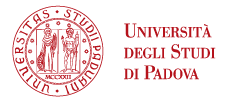Reactive Oxygen Species and Cytotoxic Immunity
Cytotoxic immunity:
Natural killer (NK) cells and cytotoxic T lymphocytes (CTL) respectively the innate and the adaptive cytotoxic immune effector cells involved in the response against stressed target cells such as transformed cells or pathogen-infected cells. These effector cells play a critical role in the immune response against cancer. Cytotoxic CD8+ T lymphocytes and in particular stem-like memory CD8+ T cells play an essential role in the antitumoral immune response. Engagement of the T-cell receptor (TCR) in the context of costimulatory and proinflammatory signals activates naive CD8+ T cells to undergo clonal expansion and effector T-cell differentiation. This expansion is followed by a contraction phase, in which only a small fraction of the antigen-experienced T cells differentiates into memory CD8+ T cells capable of a rapid response to antigen restimulation. The strength and duration of the initial signal are essential for the cell fate choice between short-lived effectors and long-lived memory cells. Cytotoxic lymphocyte-mediated cell death mainly through the cytosolic delivery of their effector proteases, granzymes, into the cytosol of their target cells. Interestingly, we have found that cytotoxic lymphocytes eradicated their target cells in a ROS-dependent manner. Paradoxically, the redox environment severely affect their ability to engage their target cells. One aim in the lab is to continue to investigate the role of these reactive oxygen radicals in the outcome of the anti-tumoral immune response both form the target and from the effector cells stand point.
Reactive Oxygen Species:
Reactive oxygen species (ROS) result from the partial reduction of oxygen. This large family of reactive compounds include both radical species (superoxide anion (O2•-), hydroxyl radical (•OH) nitric oxide (NO)) and non-radical species (hydrogen peroxide (H2O2), hypochlorous acid (HOCl), peroxynitrite (ONOO-)). ROS are very pleotropic compounds. They are involved in both physiological processes such as inflammation, vasoconstriction, signal transduction, cell migration, differentiation, proliferation and pathological conditions as they are common determinants of various forms of cell death. The molecular understanding of their biogenesis and their mode of action during cell death is the topic of intense investigation. In the case of cytotoxic lymphocyte-mediated cell death, we have found that ROS originated from the disruption of the target cell respiratory chain. One aim of the lab is to investigate how ROS control the function of the cytotoxic lymphocytes.
Cancer:
In the lab we are using a model of glioblastoma multiforme, a highly heterogeneous and aggressive primary brain tumor to investigate the dynamic of interaction of the cytotoxic lymphocyte and the glioma cells. We found that the mitochondrial-ER interorganelle contact sites regulate glioma cells susceptibility to lymphocytes. Another aspect of our work is to investigate the role of interoganellar contact sites in the biology of the glioma cells, their contribution to the redox tumor microenvironment and susceptibility to cytotoxic lymphocytes and chemotherapies.
For further information visit: https://www.vimm.it/scientific-board/denis-martinvalet/
People
People
Lavinia Cigalotto PhD student
Kubra Sagandak MS student
Luca Ferro MS student
Sadaf Abedi MS student
Andressa Brancher Roeder MS student




